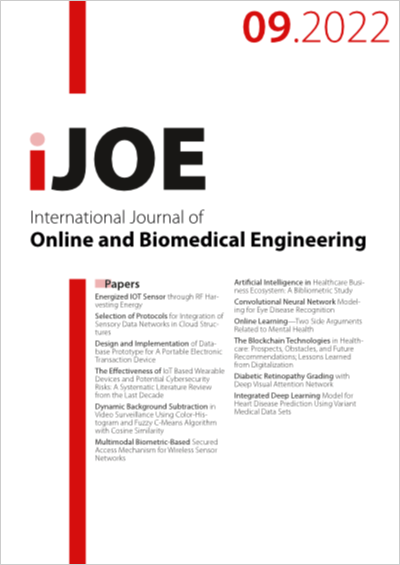Integrated Deep Learning Model for Heart Disease Prediction Using Variant Medical Data Sets
DOI:
https://doi.org/10.3991/ijoe.v18i09.30801Keywords:
CNN, Heart Disease, Multi Variant Data Set, DPW, Lung Images, Clinical Data Set, Disease PredictionAbstract
The Phenomenon of heart disease prediction has been well studied. There exist numerous techniques exist in literature which uses different features and methods. However, the accuracy of predicting heart disease is still a questioning factor. Towards improving the performance of heart disease prediction an efficient Integrated Deep Learning Model with Convolution Neural Network (IDLM_CNN) is presented in this article. The model considers various features from different data sets of lungs, diabetic and clinical features. The integrated model extracts texture features from lung images in form of mass values. Similarly, the blood glucose, BMI and other diabetic features are extracted from diabetic data set. Also, lifestyle features like physical habits, food habits and smoking habits are extracted from clinical data sets. Such features extracted from various data sets are combined and trained with Convolution neural network to support the disease prediction. The method convolves the features of lungs and combines with other features to compute Disease Prone Weight (DPW) towards cardiac disease. Based on the value of DPW, the method predicts the possibility of heart disease. The proposed method increases the performance of disease prediction and reduces the false ratio.
Downloads
Published
How to Cite
Issue
Section
License
Copyright (c) 2022 Syed Anwar, senthil kumar t

This work is licensed under a Creative Commons Attribution 4.0 International License.



